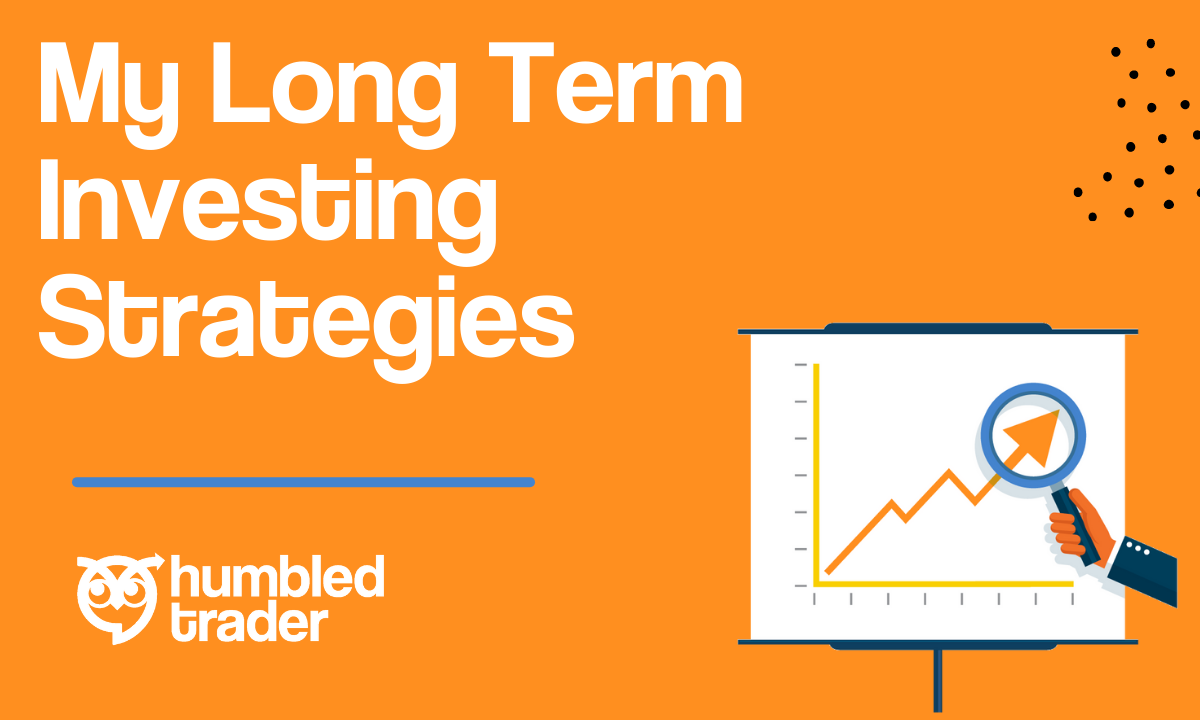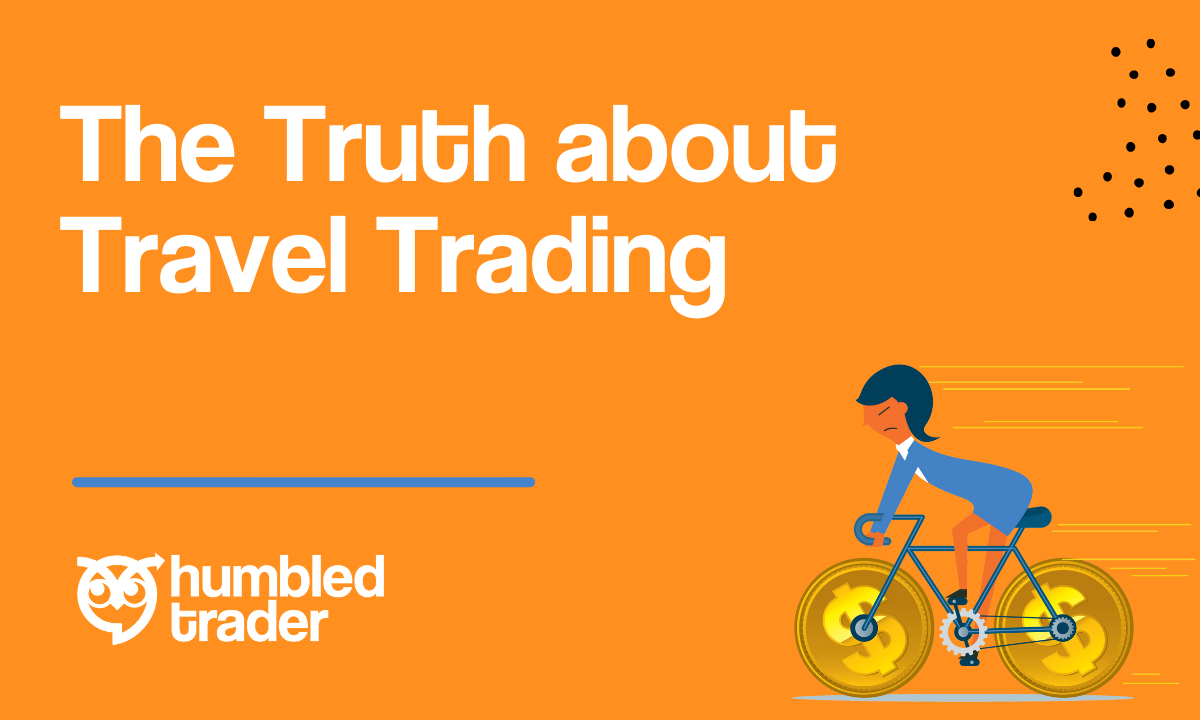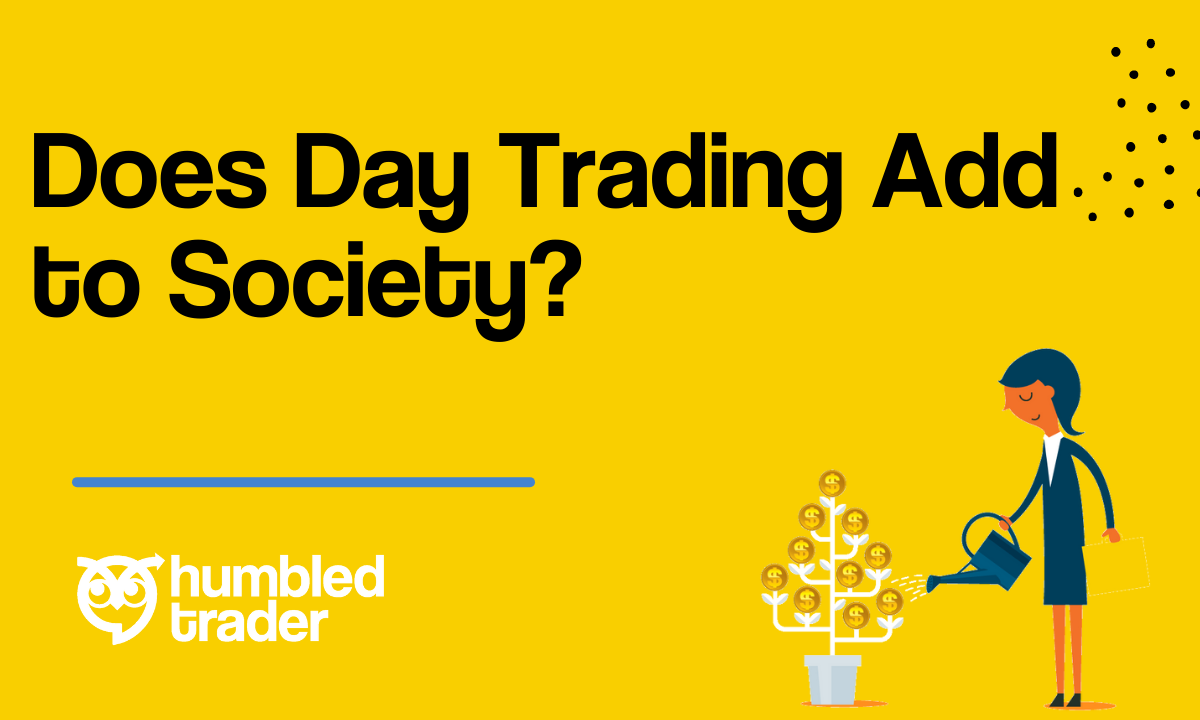My Long Term Investing Strategies

As day traders, we have got to look for ways to invest our profits outside of our day-to-day trading accounts. If you’ve been trading for as long as I have, you’ll know that money could be made fast just as it could be lost fast.
So you gotta make that dough work for you outside of your trading accounts. That’s why it's very important to diversify where you are putting your cash, whether it be Lamborghinis, private jets, or Pokémon cards.
Just kidding, I have none of those things. In this article, I’ll be sharing where I’ve personally invested my day trading income over the years through five major investment areas.
The goal of this article is just to bring some light to you, and many traders out there, so you can start thinking about investing for your future goals or retirement. If you want to be a full-time trader, you cannot expect any employer benefits or investment contributions. Your retirement is in your own hands.
Disclaimer
Before we start, just a reminder that I am not a financial advisor. I’m not saying what I'm doing is the right way or the only way. But these are the investments that have been giving me steady, stress-free, and lucrative returns over the last seven years outside of my day trading account.
Since I am a full-time day trader in the stock market, of course it only makes sense for me to have some of my long-term investments in the stock market. Keep in mind I am talking about my investment accounts, not my short-term day trading accounts here.
Individual Stocks
I will start by talking about individual stocks that I hold. When it comes to investing long term, especially in individual companies, I like to invest in what I personally use and what I understand.
I hold most of my individual stocks in my Questrade investing accounts. The only two individual stocks that I have some significant amount of money in are Tesla and Apple stock.
The reason I like Apple is because… it’s Apple. It’s reliable. I’ve been using their products since I was back in college, and they are growing their suite of products.
I have been hearing all sorts of reports and analysts' comments saying that Apple is dead and they are not innovating anymore all the way back to when I started trading over 7 years ago. After all these years, the stock just kept steadily going higher and higher.
Now for Tesla, this is going to be an interesting scenario. I first started buying Tesla stock around the same time I posted my first ever YouTube video on my channel at the end of 2018. I did the research then, and I shared it all in the video: Why I wouldn’t bet against Tesla stock in 2019.
At the time I started purchasing, the stock was trading around $300 presplit at the end of 2018. I bought the stocks in my TFSA account, and it just kept tanking.
On the current split adjusted price that’s equivalent to my holdings selling off from $75 all the way down to $35. Yes, that was a 50% decline in my investments in this stock.
I remember seeing comments on my YT video saying that I must have gotten killed, bankrupted, or lost all my money, and that's why I was making videos on YouTube.
Well little did they know… I have a very hands-off approach when it comes to my long-term investments. I pretty much just buy and forget about it. This is true for all of the other investments I will reveal later on.
I perhaps check my investments at most once a month, sometimes even once every quarter. I don’t check every tick on every stock like I do in day trading.
Despite the sell-off with the entire market, despite all the bearish reports saying how Tesla is overvalued, Elon Musk has never disappointed me. Somebody just needs to take his twitter away from him. Like seriously. I was a millionaire until Elon tweeted.
Tesla and Apple stock are the only two individual stocks that I regularly add on the dips. There are investors who are scared to ruin their average. Not me. If I believe in the companies and their future outlook, I don't mind buying high and buying even higher on the way up. My most recent buys on these two stocks were during the middle of 2021.
I have a few other individual stock holdings as well, but all of these are a lot smaller positions than Apple and Tesla stock. I have Disney, Raytheon Technologies, Corsair, Bumble, and a few dividend stocks like SPG, APTS, and NHI. SPG Simon Properties and the rest of the REITS: APTS and NHI give me exposure to the real estate sector in the U.S.
I started buying them slowly during the pandemic when the share prices got destroyed, and they were all down more than 50%. I saw this dip as a good way to start allocating a small amount of my capital for stocks or REITs that pay dividends.
They have since then recovered to new highs, all except for NHI. That’s also my biggest loser in this portfolio.
Dividends
Speaking of dividends, they are not my primary focus right now. Since I’m still young and have 30 to 40 years to let my investments work, I prefer to invest in high growth potential stocks and ETFs I will mention later.
However, I do dabble in some Canadian dividend ETFs, and I actually prefer these over the American dividend stocks just because it’s more tax-efficient for Canadians to earn Canadian dividends rather than American.
The dividend ETFs I like are XEI.TO and XDV.TO from iShares. They give me good exposure in Canadian energy stocks and banks, which are very regulated and well run in Canada compared to the U.S. Both of these provide me with some decent dividend yields as well.
Again, dividends are not my primary focus, but it’s nice to have all the payouts, monthly or quarterly, reinvested back into buying more shares. That’s where I get the compound interest, the eighth wonder of the world, year over year.
Index Funds
Now let’s move on along to the broad market index funds, which I have more capital invested in than individual stocks on Questrade. I invest in these ETFs every two weeks on Wealthsimple Investing.
Wealthsimple investing is a Robo advisor, and I really just use it for the convenience to automatically contribute regularly to all of these ETFs.
I have my portfolio risk set to HIGH, which is suitable for my personal time horizon and investment goals. You should evaluate your own needs and situation before picking your risk exposure.
Personally, I’m aiming for growth here over the next 20-30-40 years. I’m not scared of market volatility. You can see the majority of ETFs I’m invested in are in broad market equities in the U.S., Canada, and internationally. My top three ETF holdings are VTI, IEFA, and EEMV.
VTI
VTI is the Vanguard Total stock market ETF. The expense ratio is only 0.03%. and this fund tracks the performance of U.S. equity markets in large caps, mid-cap and small caps. This fund has done extremely well since the drop we had in march 2020.
IEFA
The next major ETF holding is IEFA. This is a fund by iShares that invests in large, mid, and small cap stocks in developed Europe, Australia, and the Far East. Essentially, it is providing diversification in international markets outside of the U.S.
EEMV
Then we have EEMV. This is another ETF by iShares that invests in emerging markets equities, such as China, Brazil, Russia, and India. Out of all the ETFs Wealthsimple offers on their platform, this is the one that's the most questionable.
The expense ratio is really high at 0.25%, and the returns have been minimal at just 4%. I think that's probably due to the recent performance in the Chinese stocks.
XIC and VUS
The other funds I have are XIC and VUS. XIC allows me to invest in the Canadian equities market, mostly concentrated in finance and energy. VUS is another Vanguard US total market ETF, but has Canadian dollars hedged.
You can look up these ETFs in detail if you want, but it’s nothing fancy; they are just all broad market ETFs. Again, the reason I am using Wealthsimple robo investing is that I want to do what’s easiest, hands-off, and time-saving for me so I don't have to lift a finger to invest regularly while having diversification outside of U.S. markets.
I am already busy day trading actively on individual stocks. I don’t want to do the same for investing. I don’t bother picking out individual stocks or hidden gems in the market that people are always looking for on YouTube every other month.
Real Estate
The next investment asset class is where I have the most capital invested long term, just a bit more than the stock market, and that is real estate. I live in Vancouver, one of the most expensive cities in North America, and definitely in Canada.
I bought my first primary residence many years ago in 2016. At the time, I was living at home with my mom and had a decent amount of savings from day trading and of course my former career.
I'm not going to lie here; my mom saw that I was just spending disposable income partying and going to music festivals, and uh, not paying her rent… so one day she told me, “Okay, Shay it's time to grow up and move your ass off from that couch. And stop eating.”
So yeah, I guess she was right. I was kind of stupid with money back then. Yes, I had to grow up and get off the couch, but I didn't stop eating.
Once again, my mom was right. Unknowingly, putting my money to work and purchasing my first property was the best financial advice she could have given me. Not only did it allow me to get my foot into the red hot real estate market in Vancouver in 2016; it also forced me to start budgeting and tracking for all my expenses.
Before this, making money from trading was great, but I had no idea where the money went with my spendings. I didn’t know how to invest and spend in the most tax-efficient ways and most of my cash was just sitting there collecting dust under my couch.
I am very bullish on the real estate market in Greater Vancouver overall. This is my way of capturing both the capital appreciation and monthly income from rentals.
Overall, my real estate investment since 2016 has yielded me more than 3X return, and I have no plans on selling anytime soon.
What I love about real estate is the leverage. In Canada, you have to put a 20% down payment in all standard traditional loans, but you get to borrow the other 80% from the banks in terms of the mortgage. All of my loans are fixed-rate at sub 2%, so I still get to sleep really well at night.
I will continue looking for more real estate investment opportunities in Greater Vancouver as long as the interest rate stays low.
Crypto
Finally, we are now at my crypto investments. Yes, I saved the most speculative and volatile investment for last. Compared to all the previous asset classes I talked about, this is definitely the area I understand the least about.
Therefore, it makes sense for my own risk tolerance to allocate only a small amount of my capital here. Essentially, I only invest what I am comfortable losing.
The only cryptocurrencies I own are Bitcoin and Eth, essentially the two big dogs in this space. I only started investing in them in Feb. or March of 2021. At the time, Bitcoin was at all-time highs around 50k to 60k.
Instead of throwing all my intended capital into BTC or Ethereum all at once, I just dollar cost averaged in. I regularly bought every two weeks into both of these cryptos, regardless of whether Bitcoin was at 50K, 40K or 30k. I buy all my cryptos on Netcoins and hold them in Blockfi and a cold wallet under my couch.
Again, I’m only investing what I’m comfortable losing, which is a lot less than my stock portfolio and real estate, so I already calculated my risk. Please make sure you do, too, for yourself on any investment assets.
Conclusion
Hopefully, by this point, you see some patterns in my long-term investment strategies. I invest in what I know and personally use regularly, and I choose vehicles that are convenient, time-saving, and stress-free.
My money is working for me in the background while I focus on my active income in day trading. Please don’t just buy whatever I invest in. Make sure you do your own due diligence and assess your own income and tax brackets.
The goal of this article is just to bring some awareness to you and other traders. Remember to use your short-term profits to build long-term investments for your own future retirement.
If you enjoyed this article, and if you’re interested in learning how to day trade in a step-by-step manner, feel free to check out the Humbled Trader Academy on my website.
Don’t feel like reading? Watch the video.



